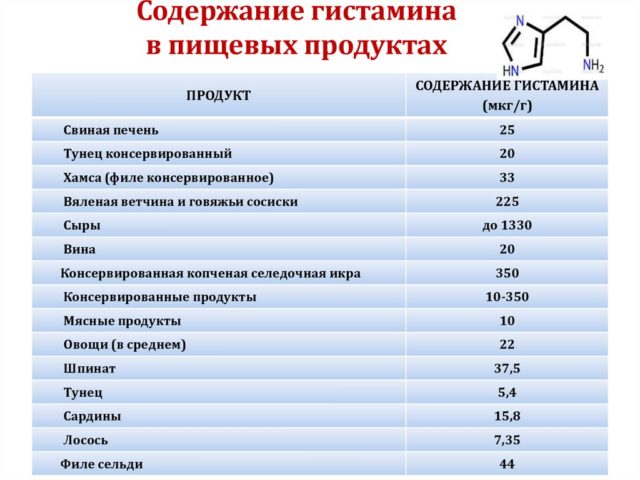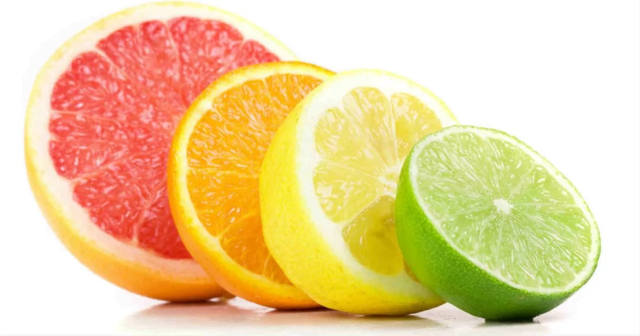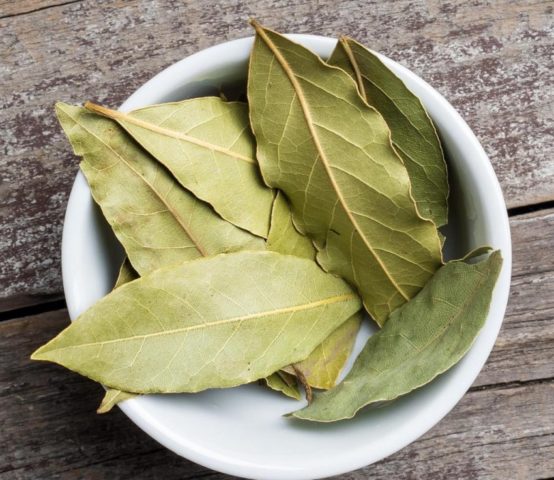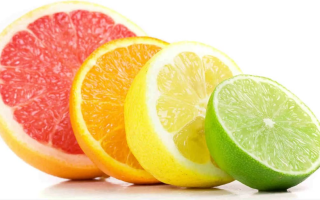Content
Sometimes signs resembling an allergic reaction are due to histamine intolerance. The substance is found in food, accumulates in the body, and is also produced by some infectious agents. It is important to know foods that increase histamine in order to limit your intake.
The effect of histamine on the body
A biogenic amine is a hormone stored in cellular elements (mucous membranes and connective tissue). His presence is hidden. Liberation occurs as a result of the influence of several factors. These include tissue damage, temperature changes, and contact with an allergen.
In the body, a substance performs various functions:
- acceleration of regeneration;
- regulation of muscle tension;
- interaction with steroids.
The hormone is also present in foods. Its presence is due to the vital activity of bacteria. This substance is harmful to health. With the abuse of certain products, pseudo-allergies or poisoning may occur.
Histamine is able to regulate the release of the necessary hormones by the anterior pituitary gland. The influence on the secretion of gastric juice is essential. However, the main function is mediation in the development of allergic reactions, which is manifested by:
- edema, itching and flushing;
- reduction of smooth muscles of the lungs, as well as increased secretion of viscous secretions;
- excitation of peripheral sensory nerves, which cause sneezing attacks;
- dilated blood vessels and nasal congestion;
- redness, tearing, burning, itching and swelling of the eyelids.
Food allergies cause smooth muscle contraction. This is accompanied by the production of digestive juices and diarrhea due to irritation of the mucous membrane of the small intestine.
Causes and symptoms of histamine intolerance
Substance can provoke allergy-like symptoms in the absence of appropriate contact. This is due to an increase in the concentration of histamine in the body due to its excess production. The phenomenon is called histaminosis and is more common than true allergies.
A common cause of hormone intolerance includes both congenital and acquired defect in DAO (diaminoxidase enzyme). It breaks down the histamine in foods. A deficiency or improper work of the enzyme leads to the lack of breakdown of the hormone. An excess of the substance causes allergy-like symptoms when it enters the bloodstream through the intestinal mucosa.
Symptoms of histamine intolerance include:
- migraine, dizziness;
- difficulty breathing;
- irritation of the nasal mucosa;
- arterial hypertension;
- tachycardia;
- disruption of the digestive system (diarrhea, flatulence);
- itching and rash of the skin.
What foods contain histamine
The biogenic amine can be found naturally in food. In some cases, its appearance is due to improper storage and damage. The sources of the hormone include the following food groups:
- sausages;
- a fish;
- seafood.
Sour dishes are rich in histamine. The following foods are named that increase the biogenic amine in the body:
- Strawberry;
- Wheat flour;
- a tomato;
- tangerines, oranges, grapefruit, pomelo;
- a pineapple;
- cocoa, coffee, chocolate;
- chicken egg protein;
- shrimp;
- preservatives, dyes and other additives.
Foods containing histamine on the table
The hormone is a stable chemical compound that does not break down when exposed to high temperatures. The table reflects the content of histamine in food:

What foods are high in histamine
The recycling process can significantly affect hormone levels. The list of foods that contain histamine includes:
- sausages (sausages, sausages);
- smoked meats (balyk, ham);
- aged cheeses;
- yeast;
- fish (mackerel, sardine, herring, tuna);
- preserves;
- sauerkraut;
- eggplant;
- soya beans;
- bananas;
- avocado;
- Red wine.

Foods that lower histamine production
Fresh and unprocessed foods contain trace amounts of the hormone. Biogenic amine levels increase during food processing. Long-term storage and maturation increase the content of the substance.
The presence of the hormone in certain quantities depends on the transportation conditions, as well as temperature indicators. For example, the smell of spoiled seafood is due to the increased concentration of histamine. Accordingly, in order to reduce it, it is necessary to ensure the correct transportation, temperature and storage duration.
Which foods are low in histamine
Foods in which a significant amount of biogenic amine is present can provoke signs of pseudo-allergy. The DAO enzyme is known to block green tea. It is advisable to choose names with a low hormone level.
The list of foods with a low concentration of histamine includes:
- apples;
- garlic;
- onion;
- watermelon;
- White rice;
- coconut milk;
- green vegetables (excluding spinach);
- grapes;
- ginger;
- herbal teas.

Poisoning symptoms
Foods high in histamine are harmful to health. Poisoning can occur due to improper storage of food, such as fish, cheeses and smoked meats.
Symptoms of histamine poisoning include:
- decrease in pressure;
- headache;
- diarrhea, vomiting;
- hives;
- swelling;
- specific taste in the mouth.
Usually, these manifestations go away on their own in a significant number of people. Complications often occur with concomitant diseases of the heart and blood vessels.
Rules for the selection and storage of products
Products containing histamine liberators can be hazardous to health. An increase in the concentration of the hormone is often caused by a long shelf life, repeated freezing.
When choosing food, nutritionists recommend choosing fresh and unprocessed foods. It is important not to disrupt the producer-consumer refrigeration chain.
You should not abuse canned food and semi-finished products.It must be remembered that histamine is not destroyed during heat treatment.
Biogenic amines tend to accumulate in fermented, overripe, fermented and rotting products. Their concentration in food differs in different ways.
You should limit the use of products containing:
- yeast;
- vinegar;
- bacteria.
Conclusion
Foods that increase histamine can be harmful to your health. The danger is posed by re-frozen food, semi-finished products and canned food. Pay attention to the appearance, smell and shelf life of the products. Foods that cause an increase in the level of histamine in the body are often processed and improperly stored.

